Innovative technologies and care professionalsWhy does implementation of
|
 |
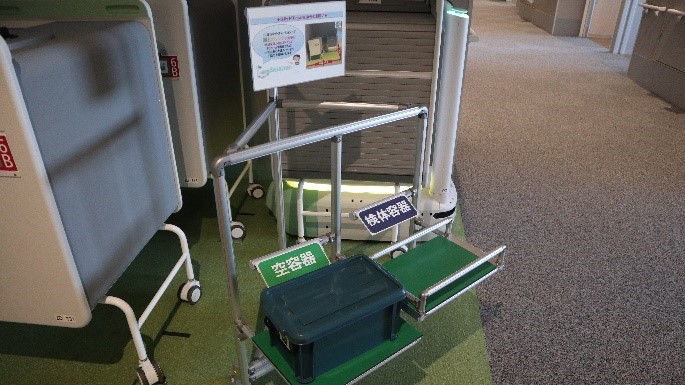 |
|
A: POTARO on standby |
B: POTARO on standby - pick-up point in a ward |
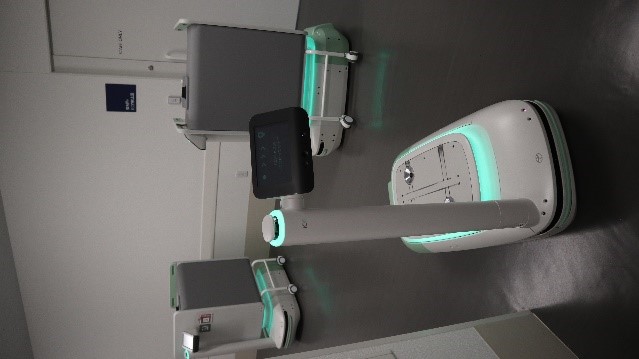 |
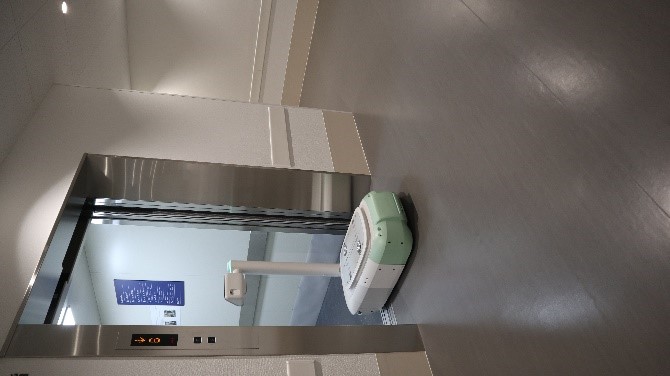 |
| C: POTARO in action - leaving charging points |
D: POTARO in action - using an elevator/going to a ward |
(Photos by NK)
Theoretical Background and Research Methodology
As an example of implementation science applied to healthcare, we adopt the ARCHIE framework proposed by the research team of Prof. Trisha Greenhalgh in the U.K. for this study. ARCHIE stands for “Anchored, Realistic, Co-creative, Human, Integrated, Evaluated”, and the following six points are key to successful implementation of telemedicine (telehealth/telecare) in society: (1) Design and development are rooted in a shared understanding of what is important to users; (2) Understanding the natural history of the disease and the disabilities that come with it (often progressive), with a realistic recognition that it is not something that can be solved by technology or care; (3) Continuously seek co-creative, evolutionary, and adaptive solutions with users, utilizing practical reasoning and common sense; (4) The human element (relationships, social networks) determines the success of technology solutions; (5) Technology-enabled services need to be integrated by maximizing mutual recognition, coordination, and mobilization of expertise; and (6) Continuous evaluation will be conducted to promote system learning. In the initial first phase of the project, (4), (5) and (6) will be particularly pertinent, as we delve into how workflows and work patterns (of nurses and allied health professionals) change over the period of 6-12 months, with the support of roboticists and other support workers on site.
From systems (resilience) engineering, the model introduced by Dr Avedis Donabedian, who applied systems thinking to the evaluation of healthcare quality, will be used as a guide. In the Donabedian model's three distinctions of "structure," "process," and "outcome," "structure" is defined as the "work system," which in the project in question refers to the department (unit) or the entire hospital where the transport robot is installed.

This project also seeks to capture how the introduction of POTARO (technology/tools) to the existing "work system" has changed the process (and outcomes). We will examine how the parties involved perceive the return (feedback loop) from the outcomes, given time.
In relation to outcomes, data on workplace culture will be collected and analyzed to consider adjustments where the system is working well and where it is not, and to consider risk management considerations (such as what to do if the robot malfunctions) after the system has been implemented. Finally, based on the interview method used in HRI (Human-Robot Interaction) research, we will investigate how each user perceives the transport robot and his/her perception of its usability, utility, and other aspects (e.g., aesthetics, scope for improvements) after working with the robot in his/her unit.
Conclusion
The significance of this project will be to provide evidence on how assistive robots such as POTARO can benefit professionals working in acute care settings in the short-, medium- and long-term and eventually contribute to enhancement of care quality and safety in the hospital that is serving the local community. Through this unique international, academic-industry-professional collaborative project in the natural environment, the project team seeks to find a better way of augmenting human capability and potential.
About the research team
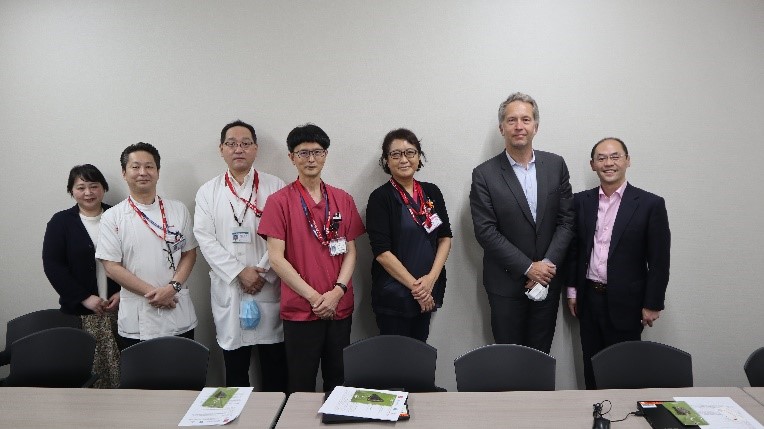
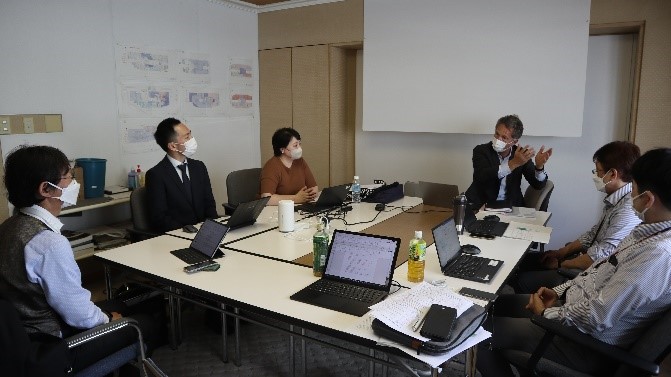
Assoc. Prof. Naonori Kodate (EHESS, Paris & University College Dublin, Ireland), Prof. Sebastien Lechevalier (EHESS, Paris) and Prof. Mayuko Tsujimura (Shiga University of Medical Science) joined forces and launched the research project “Establishing Toyota-style Person-centered, Robotics-aided Care System (T-PRoCS)” in collaboration with engineers at Toyota’s Frontier Research Center and Toyota Central R&D Labs., Inc. and care professionals at Toyota Memorial Hospital.
References
Greenhalgh T, Procter R, Wherton J, Sugarhood P, Hinder S, Rouncefield M. (2015) What is quality in assisted living technology? The ARCHIE framework for effective telehealth and telecare services. BMC Med. doi: 10.1186/s12916-015-0279-6. PMID: 25902803; PMCID: PMC4407351.Heerink, M., Kröse, B., Evers, V., & Wielinga, B. (2010). Assessing acceptance of assistive social agent technology by older adults: The Almere model. International Journal of Social Robotics, 2(4), 361–375. https://doi.org/10.1007/s12369-010-0068-5
Ide H, Suwa S, Akuta Y, Kodate N, Tsujimura M, Ishimaru M, Shimamura A, Kitinoja H, Donnelly S, Hallila J, Toivonen M, Bergman-Kärpijoki C, Takahashi E, Yu W (2023) Developing a model to explain users' ethical perceptions regarding the use of care robots in home care: A cross-sectional study in Ireland, Finland, and Japan. Archives of Gerontology and Geriatrics. doi: https://doi.org/10.1016/j.archger.2023.105137
IEEE Standards Association. (2018). Ethically aligned design version 2. https://standards.ieee.org/news/2017/ead_v2/
Kodate N, Obayashi K, Maeda Y, Yu W, O’Shea D, Sakata N, Suwa S, Masuyama S (2023) Care professionals’ experience of deploying an original non-autonomous air-purification robot in residential care homes in Ireland and Japan. 5th International Congress on Human-Computer Interaction, Optimization and Robotic Applications (HORA), Istanbul, Turkiye, IEEE 2023, pp. 1-9, doi: 10.1109/HORA58378.2023.10156802.
McGlacken-Byrne D, Larkin F, Mannan H, Vallières F, Kodate N (2022). An Introduction to Systems Thinking. In F. Larkin, F. Vallieres, H. Mannan, N. Kodate (Eds.) Systems Thinking for Global Health. Oxford: Oxford University Press, pp.1-17.
Prime Minister’s Office of Japan (n.d.) What is Society 5.0 (Japanese). Retrieved from https://www8.cao.go.jp/cstp/english/society5_0/index.html (accessed 20 September 2023).
Prime Minister’s Office of Japan, Headquarters for Japan’s Economic Revitalization (2015) Japan’s Robot Strategy: Vision, Strategy, Action Plan. Retrieved from https://www.kantei.go.jp/jp/singi/keizaisaisei/pdf/robot_honbun_150210EN.pdf (accessed 20 September 2023).
Loh E (2018) Medicine and the rise of the robots: A qualitative review of recent advances of artificial intelligence in health. BMJ Leader. BMJ Publishing Group.
Turja T and Oksanen A (2019) Robot Acceptance at Work: A Multilevel Analysis Based on 27 EU Countries. International Journal of Social Robotics 11(4): 679–689.
Pekkarinen, S. et al. (2020) Embedding care robots into society and practice: Socio-technical considerations, Futures, 122, 11-14.







